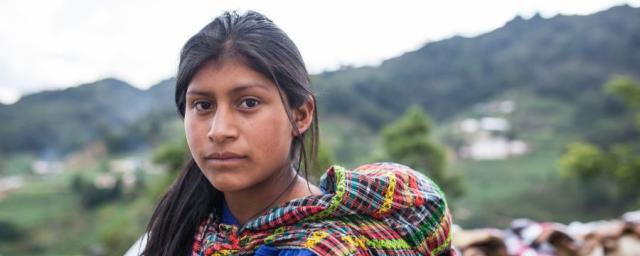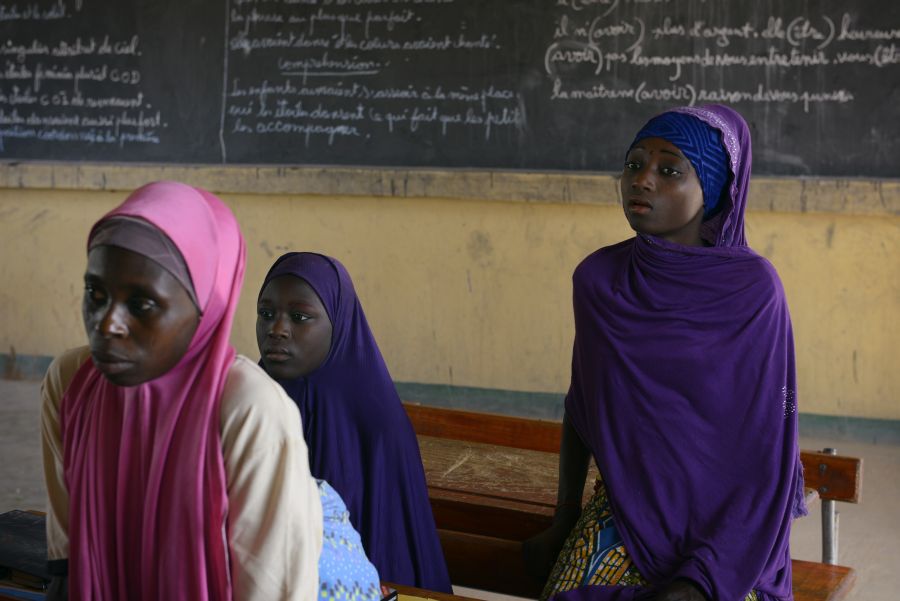
Violence against women and girls is rooted in the widely accepted social norms that too often contribute to gender inequality, including male entitlement, domination and control over the bodies of women. Photo: William Vest-Lillesøe/Oxfam
”It is frightening to think that you may not get home alive one day.”
One in three women will experience physical or sexual violence in her lifetime. Whilst there is no single cause for such violence, some of the strongest and most consistent factors are harmful social norms that contribute to gender inequality.
These norms are based on shared beliefs and expectations about how people should behave. They include male entitlement, domination and control over the bodies of women and girls, and rigid gender roles, as highlighted in an Oxfam’s research from 12 countries across Africa, Latin America and the Caribbean and the Pacific.
Find out ten of these social norms that drive violence against women and girls.
1. Women must be submissive to male family members in all aspects of her life
Rigid gender roles often result in the expectation that women be submissive to male family members. When married, women are expected to obey their husbands, act according to their wishes and not strive for equal decision making. If they transgress these norms they may face physical violence used by husbands as punishment or discipline.
In the Solomon Islands, 49% of respondents agreed a good wife should obey her husband even if he is wrong.
2. Men are expected to exercise coercive control
Whilst women and girls are expected to be submissive, men are expected to exercise power and control in their families and relationships, which can manifest in various ways. In dating relationships, male dominance can appear in the form of monitoring mobile phones and social media.
Our research from the Latin America and the Caribbean (LAC) region found young men have significant control over their partners’ social media use and phones – with 80% of young people saying their male friends monitor their partner’s phone.
 In Latin America and the Caribbean, violence against women and girls is a significant and persistent problem. For example, 1,831 women were murdered by men in 2016 and 14 out of the 25 countries with the highest rates of femicide are located in Latin America and the Caribbean. Photo: Oxfam
In Latin America and the Caribbean, violence against women and girls is a significant and persistent problem. For example, 1,831 women were murdered by men in 2016 and 14 out of the 25 countries with the highest rates of femicide are located in Latin America and the Caribbean. Photo: Oxfam
3. Men have the right to discipline women for ‘incorrect’ behavior
Our research revealed that there is strong belief, among both women and men, that violence is acceptable, and even necessary, when used by men to discipline women for not delivering on their perceived responsibilities or when their behavior transgresses social norms. The Tunisian research found physical violence was justified when a woman does not obey her husband.
In the Solomon Islands, 65% of women respondents and 35% of male respondents agree with the statement ‘it is acceptable for a man to hit and hurt his wife if she doesn’t do the housework to his liking’.
4. Women cannot deny their male partner sex
In intimate relationships, women’s and girls’ choices over their bodies are dominated and controlled by their male partners and the belief that women’s bodies should always be available to men. These norms contribute to intimate partner rape and other forms of abuse, which are the most common form of violence against women and girls.
In Tunisia youth state that women should always be ready to satisfy a men’s sexual urges. In Solomon Island, 52% of men believe a woman is obliged to have sex with her husband even if she does not feel like it.
5. Sexual harassment is normal
Dominant patterns around male sexual entitlement over women’s bodies contribute to sexual harassment and other forms of sexual violence. In Colombia, a young woman stated, ”I believe that everything arises from the fact that men see us as sexual objects and as the persons they need to fulfill their sexual needs.”
This is powerfully demonstrated by the LAC regional research that found 75% of young people state their male friends believe harassment is normal.
 Each year, 15 million girls are married before the age of 18. Most of these girls are deprived of their fundamental human rights to health, education, safety, and bodily integrity. Photo: Chris de Bode/Oxfam
Each year, 15 million girls are married before the age of 18. Most of these girls are deprived of their fundamental human rights to health, education, safety, and bodily integrity. Photo: Chris de Bode/Oxfam
6. Women experience violence because they are dressed ‘provocatively’
Among the countries involved in the study, it is common to see communities blaming the actions of women to justify male sexual entitlement and violence. Stigma is often placed on those who have experienced violence — blaming the survivor for abuse.
In the regional LAC research, seven out of 10 young men aged 15–19 blamed women for the violence they experienced because they were dressed ‘provocatively’ or out on the street late at night.
7. All women should become mothers
Violence against women and girls is rooted in the patriarchal power imbalance between men and women, and in the dominant belief that men protect and provide for and have authority over their family and good women prioritise their family’s health and wellbeing. After marriage, women’s most important roles are to serve their husbands and to have and to raise their children.
The LAC study found 79% of young women believe that ”all women should become mothers”. These beliefs are so strong that one young woman in Cuba stated ”I think every woman is a mother, even if she doesn’t have children.”
8. Girls are valued as wives not as individuals
For girls, the social expectation to demonstrate submissiveness can lead to early marriage, which is also used to control their sexuality. Girls’ bodies are often seen as assets that can depreciate or appreciate in value depending on community perceptions and notions about ‘honor’ contributing to early marriage. In Nigeria, this was summarized as: ”You are worth more as a wife than as a daughter.”
More than 700 million girls worldwide have been forced to marry before the age of 18. These girls are less likely to go to school, tend to suffer from sexual and reproductive health problems, and are more likely to experience abuse perpetrated by their husband.
 ”We need to break the cycle of violence. To expose the monsters in the home. We must educate a new generation about ending violence against women.” Loretta Taika, from Solomon Islands, who uses street art to say enough to violence against women and girls. Photo: Neil Nuia/Oxfam
”We need to break the cycle of violence. To expose the monsters in the home. We must educate a new generation about ending violence against women.” Loretta Taika, from Solomon Islands, who uses street art to say enough to violence against women and girls. Photo: Neil Nuia/Oxfam
9. Heterosexuality is the only sexual orientation that is acceptable
Discrimination and marginalization make some women and girls more likely to experience violence, this includes women and girls with disabilities, divorced women and widows, sex workers and lesbian and trans women.
The LAC regional research found that 73% of young women (20-25) and 67% of young men (20-25) believe their friends believe that lesbians should not show their sexual orientation in public.
10. Divorced women have less value
Divorced women and widows face particular forms of violence because of discriminatory beliefs around the roles and value of women.
In Papua New Guinea, the research highlighted the marginalization of divorced women and widows, who are seen as having less value – since they do not have the monetary value of bride price anymore. Furthermore, they are considered to be property of the family in law who paid for them in the first place. Therefore, they are not respected in their families and often not protected against violence.
The LAC regional research found that 59% of young women and men (20-25) think one of the main reasons why women endure violence is their lack of financial autonomy.
Let’s stop thinking it’s normal
Every day, everywhere, all over the world, women and girls face violence. We can change this.
Oxfam’s worldwide ‘Enough’ campaign to end violence against and girls brings people of all genders, ages, and backgrounds together, to transform the normal. It aims to challenge and change the harmful social norms that justify abuse, to ones that promote gender equality and non-violence.